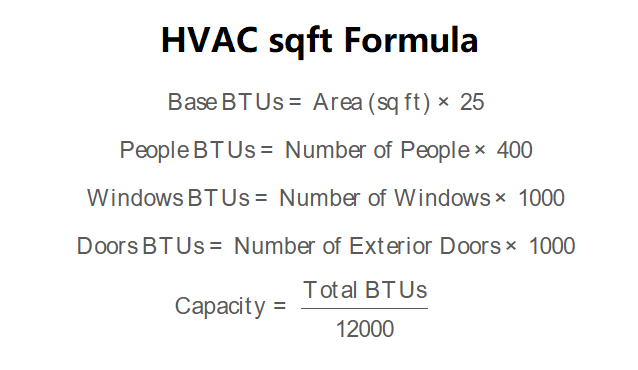 Home
Home
 Back
Back

Definition: This calculator estimates the cooling capacity (in tons) required for an HVAC system based on the square footage of the area, number of occupants, windows, and exterior doors.
Purpose: It assists homeowners in determining the appropriate HVAC system size for efficient cooling and comfort.
The calculator uses the following method:
Formulas: \[ \text{Base BTUs} = \text{Area (sq ft)} \times 25 \] \[ \text{People BTUs} = \text{Number of People} \times 400 \] \[ \text{Windows BTUs} = \text{Number of Windows} \times 1000 \] \[ \text{Doors BTUs} = \text{Number of Exterior Doors} \times 1000 \] \[ \text{Total BTUs} = \text{Base BTUs} + \text{People BTUs} + \text{Windows BTUs} + \text{Doors BTUs} \] \[ \text{Capacity} = \frac{\text{Total BTUs}}{12000} \] Where:
Unit Conversions:
Steps:
Accurate capacity estimation is essential for:
Q: What does HVAC capacity mean?
A: HVAC capacity refers to the cooling power of an air conditioner, measured in tons, where 1 ton equals 12,000 BTUs per hour—the heat required to melt 1 ton of ice in 24 hours.
Q: Why include occupants, windows, and doors in the calculation?
A: Occupants contribute heat through body warmth, while windows and doors increase heat gain via air leakage and solar radiation.
Q: Is this calculator’s estimate sufficient for purchasing an HVAC system?
A: No, this is an estimate. A professional Manual J load calculation is recommended to account for factors like insulation, climate, and window types for accurate sizing.